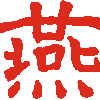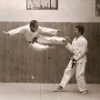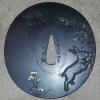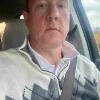-
Posts
2,192 -
Joined
-
Last visited
-
Days Won
40
Jussi Ekholm last won the day on December 9
Jussi Ekholm had the most liked content!
About Jussi Ekholm

- Birthday 12/29/1988
Profile Information
-
Gender
Male
-
Location:
Tampere, Finland
Profile Fields
-
Name
Jussi Ekholm
Recent Profile Visitors
7,688 profile views
Jussi Ekholm's Achievements
-
That is very nice comparison. As I am quite clueless when it comes to photography it feels like very large difference by just different type of light. To me both pictures look really good even though the result is different.
-

Help With Mei (two smith sword)
Jussi Ekholm replied to cookiemonstah47's topic in Translation Assistance
I am just on my phone so I cant help that much now but it seems to me that the smiths are 綱広 Tsunahiro & 則広 Norihiro (they use this old style Hiro 廣) -
It is very nice sword. Sometimes it can be tricky what is seen as ubu nakago. NBTHK states also in Jūyō that nakago is ubu. In my understanding if machi is in original position the nakago end can be cut and sword is still seen as ubu. There are few extreme examples of this in naginata, where I believe the nakago is cut for 50cm and it is still seen as ubu. Also sword can still be ubu even though there is machiokuri. In these cases I would assume that nakago needs to be original form other than machiokuri. Otherwise it will just fall under suriage.
-
I think I managed to find correct swords for Tametsugu and Masatsune but will know for sure in few years when I will get the book and see them in picture. Very short tachi like that are not that common and they are not really blades that I personally enjoy. One thing that I noticed that there are 57 Kotō swords and 16 of them are signed (and two of the signed ones only seem to have 1 readable character). What is funny I made this post in October trying to throw up an "average" Jūyō pass stereotype that is in my head: Few Awataguchi A lot of Rai Few Hasebe Few Nobukuni Quite a bunch of variety of 5 Yamato schools Few Shintōgo / Yukimitsu Maybe Masamune / Sadamune / Hiromitsu / Akihiro Some Shizu / Naoe Shizu Few Nanbokuchō / Muromachi Mino Few Tametsugu Few Norishige / Gō Some Ko-Bizen Lot of Ichimonji Some Osafune mainline Few Hatakeda / Ukai Few Motoshige Bunch of Sōden-Bizen Bunch of sideline Bizen Some Muromachi Bizen Few Ko-Aoe Bunch of Aoe Few Ko-Mihara Bunch of Sa school works Few Enju I think my estimate was pretty good The red ones were missing this session and I overshot the blue amounts but the session was actually very small in passed swords compared to many previous sessions. I was bit surprised there were no Ko-Bizen passes this session. On the other way Sanjō Yoshinori pass & 2 Bungo Tomoyuki were something that was unexpected for me.
-
NBTHK released the Jūyō 71 results today. As I got home from work I looked through them and indexed them in my usual format (only swords as I did this fast). Here are the translittered results, and original Japanese PDF can be found at NBTHK website: https://www.touken.or.jp/Portals/0/第71回重要刀剣等指定品発表.pdf Seems like this year 64 swords passed and 568 were sent in. Congratulations to everyone who passed an item 1. Katana – Awataguchi Hisakuni – Mumei [粟田口久国] 2. Katana – Awataguchi Kuniyoshi – Mumei [粟田口国吉] 3. Tachi – den Awataguchi – Mumei [伝粟田口] 4. Tachi – Rai Kuniyuki - 国行 [来] 5. Katana – Rai Kuniyuki – Mumei [来国行] 6. Tantō – Rai Kunitoshi (1321) - 来国俊 / 元亨元年四月 (Cut off) 7. Tachi – Ryōkai – Mumei [了戒] 8. Katana – Rai Kunimitsu – Mumei [来国光] 9. Katana – den Rai Kunimitsu – Mumei [伝来国光] 10. Katana – den Rai Kunimitsu – Mumei [伝来国光] 11. Katana – Rai Kunitsugu – Mumei [来国次] 12. Katana – Nakajima Rai – Mumei [中島来] 13. Katana – den Hasebe – Mumei [伝長谷部] 14. Katana – Sanjō Yoshinori - 吉則[三条] 15. Ken – Yukisada (Senju’in) - 行貞 [伝千手院] 16. Katana – Senju’in – Mumei [千手院] 17. Tachi – den Taima Tomoyuki - 友 (Cut off) [伝当麻友行] 18. Katana – Hoshō – Mumei [保昌] 19. Katana – Yamato Shizu – Mumei [大和志津] 20. Tantō – Shintōgo – Mumei [新藤五] 21. Katana – den Yukimitsu – Mumei [伝行光] 22. Katana – den Yukimitsu – Mumei [伝行光] 23. Tantō – Yukimitsu (1322) - 鎌倉住人行光 / 元亨二年三月 24. Wakizashi – den Sadamune – Mumei [伝貞宗] 25. Tantō – den Sadamune – Mumei [伝貞宗] (Attachment – Hon’ami Origami (1656) - 明暦二年本阿弥光温折紙) 26. Katana – den Shizu – Mumei [伝志津] 27. Tantō – Shizu – Mumei [志津] 28. Katana – den Gō – Mumei [伝江] 29. Katana – Fukuoka Ichimonji – Mumei [福岡一文字] 30. Katana – Ichimonji – Mumei [一文字] 31. Katana – den Yoshioka Ichimonji – Mumei [伝吉岡一文字] 32. Naoshi – Yoshioka Ichimonji - 一 [吉岡一文字] 33. Katana – Chikakage – Mumei [近景] 34. Wakizashi – Moriie – Mumei [守家] 35. Tachi – Kanemitsu - 備州長船住兼光 (Attachment – Hon’ami Origami - 本阿弥光忠折紙) (Attachment – Koshirae - 黒蠟色鞘打刀拵) 36. Wakizashi – Yoshimitsu (1357) - 備州長船義光 / 延文二年七月日 37. Katana – Motomitsu – Mumei [基光] 38. Katana – Motoshige – Mumei [元重] 39. Katana – Kanenaga – Mumei [兼長] 40. Katana – Nagamori – Mumei [長守] 41. Katana – Ōmiya Morikage – Mumei [盛景] 42. Tachi – Yasumitsu (1419) - 備州長船康光 / 応永廿六年六月日 43. Katana – Genbei Sukesada (1565) - 備前国住長船源兵衛尉祐定作 / 於天神山作 / 永禄八年二月吉日 44. Tachi – Tametsugu - 為次 45. Tachi – Aoe - 備□ (Fumei) [青江] 46. Katana – Aoe – Mumei [青江] 47. Tachi – Masatsune (Bitchū Senoo) - 正恒 [備中妹尾] 48. Katana – Ko-Mihara Masaie – Mumei [古三原正家] 49. Katana – Ko-Mihara Masahiro – Mumei [古三原正広] [Kiritsuke 備前長船住祐直上ル之] 50. Katana – Ko-Mihara – Mumei [古三原] [Kinzōgan ga aru 松平與一郎 (花押) / 依野田城戦功之拝受ス] 51. Tantō – Sa Yasuyoshi – [Shumei 左 / 長識 (花押)] [左安吉] 52. Naoshi – Sa Sadayoshi – [Shusho 左] [左貞吉] 53. Tachi – Bungo Yukihira - 豊後国行平作 54. Katana – Bungo Tomoyuki – Mumei [豊後友行] 55. Wakizashi – Bungo Tomoyuki (Nanbokuchō) - 友行 [豊後 - 時代南北朝] 56. Katana – Enju Kunitoki – Mumei [延寿国時] 57. Katana – Enju – Mumei [延寿] 58. Katana – Horikawa Kunihiro - 国広 59. Katana – Ikkanshi Tadatsuna (1658) - 粟田口近江守忠綱 / 明暦二二年五月日 / 以地鉄鍛作之 60. Katana – Kotetsu - 長曽祢興里虎徹入道 [Kinzōgan 万治三年十一月十日 / 野勘十郎成久 (花押) / 三ツ胴截断] 61. Katana – Hizen Tadahiro (1629) - 肥前国住武蔵大掾藤原忠広 / 寛永六年二月吉日 62. Wakizashi – Hizen Tadahiro (1630) - 肥前国住藤原忠広 / 永七年八月吉日 63. Katana – Hizen Masahiro (1648) - 肥前国佐賀住河内大掾藤原正広作 / 正保五年二月吉日 64. Katana – Mondo no Shō Masakiyo – (一葉葵紋) 主水正藤原正清
- 7 replies
-
- 20
-

-

-

-
First of all, thank you for providing very good pictures. Scoring the sword for that amount is a good deal in my books. I think it is completely plausible that the machi would have been tweaked a little bit, few cm like you wrote would be very reasonable. Unfortunately I couldn't find sword that would be close to 1:1 to your sword in size and shape but I think these 3 give a reasonable idea on what I would see the sword as, and measurements are bit similarish. I think possibly c.1500 like Kirill wrote above too. (the examples are all Bizen just because it is very easy to find Bizen swords from this period fast). There are swords of even 70+cm with very short original nakago, so there are lots of maybe bit uncommon things that were still done historically. https://www.aoijapan.com/katana-bishu-osafune-sukesada-nbthk-hozon-token/ https://www.nipponto.co.jp/swords11/NT335371.htm https://www.nipponto.co.jp/swords11/KT341483.htm
-
About the back carry of tachi and ōdachi, I would think it would be very rare for the person carrying the sword in back actually draw them from back, as in case of ōdachi the sword would have been very large. I talked about this with Daihōden museum staff this summer, as she was happy how interested I was about their ōdachi she came to talk to me. We talked lot about ōdachi in general and then about their museum ōdachi. I was under the impression that Mori Ranmaru whose name is in the description of the particular sword was the one using it. However she explained to me that Mori Ranmaru was actually sword carrier of Oda Nobunaga, and he would have this large ōdachi strapped in his back and if the situation came where Nobunaga would call, he would take a bow and allow Nobunaga to draw this ōdachi from his back and go into the fight. Here is a picture of that sword. Usually I don't take any pictures of swords but this time she insisted I took pictures of it, and was standing next to me looking if I will take them. It was great to see how she was proud about items in their museum and knew so much about them. There are some other ōdachi that have historical ties to famous warrior or warlord so I would think similarily they would have had someone carrying the large sword for them.
-
It is good that you are doing the research Eric, Aoi does so many sales ads, as they tend to add few swords daily 6 days per week, sometimes they do have incorrect information in their listings. In my personal opinion there is a huge variance in quality in works of Hasebe Kuninobu. Of course my understanding of quality is bit limited but I will try to explain it with items that I have seen in person. I was lucky to see the amazing Tokubetsu Jūyō tachi in NMB sword meet in Japan (arranged by Yurie & Adrian). That sword was spectacular sword. I would think that could be the pinnacle of Hasebe tachi that can be owned (Of course totally out of league for most people). I remember the owner explaining and discussing things and if I remember correctly he mentioned that the named tachi Karakashiwa would of course be the ultimate Hasebe sword. Unfortunately I have never had the privilege to see that sword in person but I do trust his word as I believe that would be a splendid sword. I have seen the Wakizashi owned by NBTHK and to be honest I am not too fond of that sword... I just can't explain it well but for me it just doesn't click. Yes it is Jūyō sword and featured in many NBTHK publications but I don't like it too much. Then I have viewed the small tantō of Atsuta Jingū and in my memory it was splendid small sword with good craftsmanship. I like Hasebe works even though I don't understand the specifics of their craftsmanship all that well. I understand budget limitations very well but if I would be looking for Hasebe short sword I would perhaps want a signed one. That will of course affect the price and you can find better quality in mumei work for same price. About the 3 signed tachi mentioned I would think they would be the Jūyō Bijutsuhin and 2 Jūyō tachi. For the Tokubetsu Hozon tachi NBTHK had added (後代) late generation in brackets. I tried to do searching and Nihontō Meikan is the only reference where I could find 2nd generation Hasebe Kuninobu and he is listed for Ōei period. So I made a slight fix in data and put is as late Nanbokuchō - Early Muromachi. I am not sure how the Art sword crowd treats these magnificient swords at shrines that I personally love. In the Tōken Bijutsu number 67 there is a 4 page article on the Shizutani Jinja sword and history of it by Kanzan Satō. He raises point that Kanzan, Kunzan and member of Honami all 3 of who saw the sword had doubts and raised specific points which cast doubt. However it was also touted as incredible unknown find, that was not in any major historical oshigata books but was featured in some historical book that had the sword and history for it. It is mentioned that sword will be polished in future, and in the end part of article with inspection report that describes the sword it is said it is going through polishing. Now bear in mind that I read these old Japanese magazines with Google Lens as my Japanese is not up to par in reading full articles. However as that article was 60+ years ago and I have not seen that sword featured in any publication anywhere, I think maybe NBTHK does not think it as legit item.
-
I might guess the sword is ubu or almost ubu, I don't immidiately see suriage effects when I look at pictures. Sakihaba is very small but Lewis mentioned before I think similarily that it has been reshaped and was wider originally. I would guess it to be from Muromachi period. Maybe you could take a photo from mune side of the nakago so it could show how is the thickness in the area of nakago and base of the blade.
-
Lukrez wrote amazing post above. As I am not a business person I haven't thought about specifics of market that much. However once you see how many swords there are currently for sale every day of the year, it is easy to understand that the dealers will probably have their own guidelines to price the average items. While it pains me to say it the vast majority of Japanese swords are average items. I am not talking about the quirky items that I personally like, just that even on various levels of quality most items are average. For these average items Japanese dealers most likely have their pattern to price the items and then they can add or reduce price depending on the actual item. Now these are just examples that I chose randomly to give an example. There are 99 Mumei katana with Rai Kunimitsu or den Rai Kunimitsu attribution at Jūyō. Now 13 of them have advanced to Tokubetsu Jūyō (well I am not yet sure of the origin of 2 of these new TJ) + 1 Mumei Kunitoshi and 1 Mumei Kuniyuki were switched to Kunimitsu at TJ. That would leave 86 Mumei Rai Kunimitsu Jūyō katana and I am sure the big dealers will have a common price for Jūyō Rai Kunimitsu katana that they will then adjust depending on the actual item. I have so far recorded 176 Mumei Ko-Mihara katana. I would assume that dealers will have a common base price for Hozon, Tokubetsu Hozon or Jūyō rated item. While the "ladder theory" that Michael mentioned above is not 100% accurate there is usually a minimum price that Jūyō items tend to fetch, and it would need to be a very good Mumei Tokubetsu Hozon Ko-Mihara to achieve the minimum price for Jūyō mumei Ko-Mihara. Even if in my personal opinion the cheaper item might be better, the Jūyō papers carry a prestige. As far as mid-higher level items go NBTHK papers are just something you pretty much expect the item to have. And the attribution that NBTHK gives to a mumei item can have a massive effect on the actual price of the item. There are actually lots and lots of Japanese swords available for purchase at any given moment. As I started to browse many Japanese dealers years and years ago, I was surprised how many high quality items are even listed online by big dealers. Some big inventory dealers like Aoi Art or Meirin Sangyo add few new Japanese swords to their inventory pretty much every day. I was just looking at Yahoo Japan and there seems to be 5,210 listings at Japanese Sword section, there are items that are not swords in there too so I think something like 3,000 swords would be closer to truth. Every now and then an item that was on Yahoo JP makes it to inventory of more established dealer. I admit I am completely clueless about inner workings of sword dealers, their relationships, and most importantly the dealer auctions. I can just imagine the price dealers actually get the basic items is quite low as they are able to make profit even on their cheaper offerings that would be quite affordable. In my personal opinion the high end items are just very small part of the market and the majority of items are lower and middle tier items.
-
I fully understand Brett and I think it is very important to be supportive of new enthusiasts to the hobby. As someone with quite modest means for collecting I know very well that spending multiple thousands into a purchase is something many people will need to seriously consider and weigh the different options. That is why I initially started looking at the prices and trying to figure out things in order to make most of my potential future purchase. It can be extremely difficult to understand why for example one mumei Ōmiya attributed sword is 600,000 yen, another is 1,100,000 yen and third one 2,800,000 and to be totally transparent I sometimes still struggle to understand the pricing for some items. Originally years I was thinking that there could be a major difference on a 700,000 yen sword and 600,000 yen sword. And many cases there can be major differences just not ones that might affect the price too much. For me personally when an item is jumping through dealers or sold multiple times, it just makes me think there must be something on that item as people don't want to keep it even though the item would be really nice. Here is an example of a Ko-Bizen tachi that was listed at 3 different high quality vendors lately. https://web.archive.org/web/20221203191527/https://wakeidou.com/pages/522/ https://web.archive.org/web/20230603022557/https://eirakudo.shop/token/tachikatana/detail/425951 https://web.archive.org/web/20240424230207/https://www.samurai-nippon.net/SHOP/V-2051.html Each of them had it priced slightly differently but they were of course around the same ballpark. The Japanese dealers of course know their pricing very well. I think the Paul Davidson collection had awesome items but a low level collector like me isn't the target audience. I just felt many of the estimates were beyond what I would have been looking at. Well of course I couldn't afford a single item from there. The most interesting item for me was the Kozori Sadamitsu wakizashi and I think that could have been a good deal: https://www.sothebys.com/en/buy/auction/2025/important-Japanese-swords-and-armour-from-the-paul-l-davidson-collection/a-ko-wakizashi-signed-bishu-osafune-sadamitsu However the smith is completely irrelevant as long as high end collecting goes so I would guess the Tomomitsu and Morimitsu got a lot more eyes on them, well the Morimitsu seems wonderful item. Of course I understand that my personal view is skewed towards overvaluing some items and not realizing the real potential for most of the items.
-
Hello! I have finished it and keep updating it yearly. Here is the version I uploaded to NMB: Since then I have done only separate yearly Jūyō results over the years. And I have been correcting errors to the big index on my pc as I have gone through all Jūyō items few times over the years. I think NBTHK should release the 71 shinsa results soon now in december, so I can update them in too and post a full index with all of the corrections. When you are typing thousands of kanji there have been some errors I made. I just got 5 Jūyō books from Yahoo JP that are in the mail. Then I will have all books from 1 to 56 on my bookshelf, and as I have few others too I am only missing about 10 or so books. And for Tōken Bijutsu I have pretty much completed my collection for the moment, I am only missing 21 of the very early numbers and I have 800+ magazines in total.
-
I consider myself as a sword researcher with 0 financial interest. Now will you still believe that line if I will tell that I have 575 pages of sword prices, and have tracked down interesting swords for over 10 years... Here is a link to an old version that I shared to NMB I think almost 7 years ago: After posting that I had some interesting discussions with few people, back then I didn't understand the bigger picture too well but I try to think I have learned something in 7 years. I had some good ones with Darcy and while we sometimes butted heads a bit as we had maybe a bit different view of the some things, now with more experience under my belt I've come to realize that the actual historical prices are pretty unrelevant. As I go through all of my regular sites every week, I just type down the price down as a habit as I had done it for so many years. Main point for myself is just tracking down the items themselves for my database. Jūyō items are actually quite easy to track down when they pop up as I have the basic data. One thing is that different dealers will sell the same item for different prices and it is just normal in life. Some can squeeze in larger profit (and will have to do it for business) while some are satisfied with smaller profit. I was just commenting last month to a smaller Japanese dealer that they have excellent prices, their answer was of course logical that they are online only, so they don't have any additional costs. Compare that to some of the top dealers, showroom in Ginza with staff etc. I feel that the only relevant thing is the current price of the item and how comfortable you are with it. Items are one of a kind items and if you are happy with the price I think that is the only thing that matters. Of course every week as I browse through all of the interesting new items that dealers and sites in my list have put out, I do keep immidiately thinking how something feels overpriced or something is actually feeling like a very good deal. I am actually super happy that Tōken World at Nagoya won the Mikazuki Kanemitsu, now I can see it some year when I visit Nagoya. For me that is the most important thing that people can actually see the items in museums. Had some top tier private collector won the item, most people would never had the chance to see the sword. I won't say anything about the big auction houses, just that I am extremely against them. I will much rather support Japanese and International dealers and would even pay premium for them for the same item rather than deal with extremely greedy auction houses. Sword dealers have a passion for this which auction houses lack.
-
I saw this sword at 2024 NBTHK exhibition, and I do need lot more sword study to really understand things. As the NBTHK article states "This is the perfection of Sōshū den work". I personally liked the Sadamune and Hiromitsu short swords in the same exhibition far more than this Masamune.
-

Slightly Cursed Kanemitsu
Jussi Ekholm replied to Francis Wick's topic in General Nihonto Related Discussion
Unfortunately to me the one with red background seems to be signed 備州長船清光 (Bishū Osafune Kiyomitsu). Kiyomitsu smiths were very prominent during late Muromachi. One thing that might be taken into consideration is that it is common for us to call a gimei for a big name smith, while there could have been other smiths signing the same way. Like for example for Kanemitsu we will easily not pay too much focus on Kanemitsu signed katana like the one in this thread as it does not be a work of Nanbokuchō Kanemitsu. Well that does not maybe make a huge difference to most if it would be by unknown Muromachi Bizen Kanemitsu or a gimei. I just think the Japanese sword appreciation is extremely top heavy as they are the ones featured in almost every reference.












